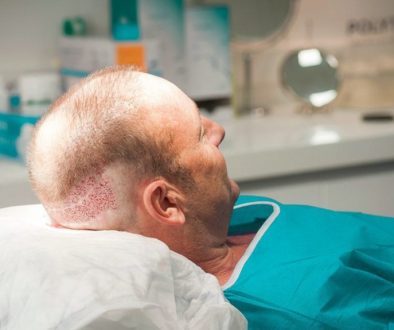Hair Transplant: Which is better (Strip of FUE)?
I am considering a hair transplant. I’ve heard about Strip Surgery and Follicular Unit Extraction (FUE). Which is better and why?
Good question!
Because this question requires a subjective answer, rather than answering the question “which is better”, I will present the some of what I see as the benefits and drawbacks as I see it to both methods.
Follicular Unit Extraction (FUE), especially in recent times has proven highly effective if performed by the right doctor, however Strip surgery is still dominant and very effective in Follicular Unit Transplantation (FUT). Here I will sum up some things to consider regarding strip and FUE which hopefully help you make an informed decision.
Growth Yield: From what I’ve read, Follicular Unit Extraction has approximately a 90% survival rate (at best and in the hands of a top clinic) whereas strip is between 95-98%. Percentages are close, but strip still wins with the higher percentage. Whether or not the difference is worth it to some is definitely a matter of opinion. This information, however, has been disputed by at least one reputable doctor who claim that yield is the same.
Session Size: Strip of course has the upper hand when talking about large sessions….so for those who need a larger session, strip is still the way to go. The very large session size for strip surgery has exceeded 7000 follicular unit grafts in applicable patients, whereas typically 1000 grafts is typically considered a large session size for FUE. FUE is definitely a consideration for those who need smaller sessions.
Candidates: There are more strip candidates than FUE candidates. Additionally, Dr. Feller has admitted (on the hair transplant network discussion forum) that there is no surefire way to know before starting the surgery whether or not a patient is REALLY an FUE candidate. So when moving forward with an FUE session, you are already taking a risk because you may not be a good candidate. So going into FUE, there is a chance that:
1. You’ll end up having to go to strip because you are not a good FUE candidate
2. You’ll end up going home with no surgery (and most likely less money) because you didn’t want strip
3. You’ll end up getting an FUE that doesn’t yield good results because the doctor performing the surgery gave you the full surgery anyway even though you may not have been a good candidate, which will significantly knock down the success percentage.
Price: FUE to date is still typically about twice the expense of that of strip surgery. Typical strip prices range between $4-$5 per graft for the first 2000 grafts and are then discounted, whereas it’s typically to pay up to $10-$12 per grafts for FUE.
Scarring: Both Strip and FUE will leave scarring, though in the hands of a skilled doctor, scarring CAN be minimal. The question isn’t “Will I have a scar?” The question is “What kind of scar will I have?” With strip, the norm is a minimal but linear scar possibly extending ear to ear or even further in extenuating circumstances. Typically to mask the scar, people tend to grow their hair in the sides and back a little longer to cover it. BUT, I’ve seen some scars done so well that people can even shave down to a 2 clip and not reveal the scar. With FUE, the scarring is different. Instead of a linear scar, you will have smaller round scars all over the back of your head where the hair follicles were removed. If done well, the scarring will also be minimal and one can even shave down to a 1 or 2 clip on the clippers without revealing the scars.
Surgical Risks: Because Strip surgery is more invasive, it should be known that there are greater risks with Strip than FUE. With strip surgery, a strip of flesh (I don’t want to minimize it by calling it a strip of “skin”) is removed from your scalp whereas with FUE, a small 1mm or smaller tool (the norm with current technology) is used to extract follicular units. Some RISKS include:
- Problems in healing (infection, etc),
- Scar widening over time (which may lead to the need for scar revision: this can depend on many factors, including:
1. Donor closure technique
2. Individual physiology
3. Session size verses donor laxity (This is why a SAFETY first philosophy should ALWAYS be implemented by any doctor – this does NOT negate large session sizes by any means, it just simply means that ALL risks should be minimized as much as possible by the doctor. Therefore, a doctor should never take a larger strip (length or width) than what is deemed “safe” for the patient.
FUE is not exempt from risk factors, they are just not as extensive. Infections of the wounds in the donor area can still occur and should be treated appropriately by a doctor. Having a doctor treat any infections if they should arise is critical in facilitating proper healing and minimal scarring
With current technology, techniques, and in the hands of a qualified clinic, the risk factors on both accounts can be significantly minimized. The norm for many clincs is to produce satisfactory results in both the recipient and donor area.
In summary, clearly based on the above, one has options. Make the decision that is best for you.
Bill
Associate Publisher
Technorati Tags: FUE, Strip surgery, FUT, Follicular Unit Extraction, follicular unit grafts, scar revision, Donor closure



